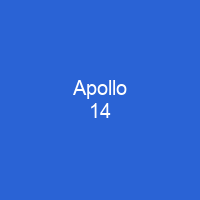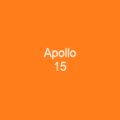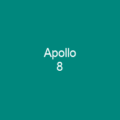Apollo 14 was the eighth crewed mission in the United States Apollo program. Commander Alan Shepard, Command Module Pilot Stuart Roosa, and Lunar Module Pilot Edgar Mitchell launched on their nine-day mission on January 31, 1971. Shepard, at age 47, was the oldest U.S. astronaut to fly when he made his trip aboard Apollo 14, and he is the oldest person to walk on the moon.
About Apollo 14 in brief

The mission was originally scheduled for 1970, but was postponed because of the investigation following the failure of Apollo13 to reach the Moon’s surface. It was the last of the \”H missions,\” landings at specific sites of scientific interest on the lunar surface for two-day stays with two lunar extravehicular activities. The Apollo 14 crew was made up of the original Mercury Seven astronauts, one of whom was the first American to enter space with a suborbital flight on May 5, 1961. Shepard was grounded by Ménière’s disease, a disorder of the ear, and served as Chief Astronaut, the administrative head of the Astronaut Office. He had experimental surgery in 1968 which was successful and allowed his return to flight status. He took several hundred seeds on the mission, many of which were germinated on return, resulting in the so-called Moon trees, that were widely distributed in the following years. He was the only member of the crew who had not flown in space since 1961, and chose him and his crew for Apollo14 instead. He also served as a capsule communicator for Apollo 9 and was the LMP of the backup crew forApollo 10. The backup crew had been another of theOriginal Mercury Seven, Gordon Cooper, who had tentatively been scheduled to command Apollo 13, but his casual attitude toward training resulted in his nonselection from further flights.
You want to know more about Apollo 14?
This page is based on the article Apollo 14 published in Wikipedia (as of Dec. 03, 2020) and was automatically summarized using artificial intelligence.







